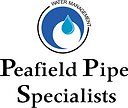Imagine the scene: you’ve just moved into your dream home, and everything seems perfect. The paint is fresh, the floors are gleaming, and the kitchen is a chef’s paradise. But beneath the surface, a network of pipes and plumbing quietly ensures that your life flows smoothly. In the world of plumbing, where unseen problems can become disastrous, hydrostatic pressure testing emerges as a hero, ensuring your home’s plumbing systems are up to the task. In this article, we’ll dive into the depths of hydrostatic pressure testing, exploring its importance, process, and benefits.
The Significance of Hydrostatic Pressure Testing
Before we delve into the details of hydrostatic pressure testing, let’s grasp why it’s such a vital step in plumbing system installation and maintenance.
Safety Assurance: Safety should always be a priority, especially when it comes to your home. Leaky or faulty pipes can lead to water damage, mold growth, and even structural damage. Hydrostatic pressure testing is a preventive measure that ensures your plumbing system can handle the pressure, keeping your home safe from potential disasters.
Code Compliance: Many building codes and regulations require hydrostatic pressure testing as a mandatory step during plumbing system installation. Complying with these codes not only keeps you on the right side of the law but also guarantees the quality and reliability of your plumbing system.
Quality Control: This testing procedure is a quality control check that plumbing professionals use to identify any weak points or defects in the system before they become larger, more expensive issues. It helps in weeding out faulty materials or workmanship early in the construction or renovation process.
The Hydrostatic Pressure Testing Process
Now that we understand why hydrostatic pressure testing is essential, let’s take a closer look at how it’s done.
Gathering Equipment: To start, a plumber will gather the necessary equipment, including a hydrostatic test pump, pressure gauge, test plugs, and hoses. The test pump is responsible for pressurizing the plumbing system.
Isolation and Filling: The plumbing system is isolated from the rest of the water supply, ensuring that only the section being tested is affected. The section is then filled with water.
Pressurization: The hydrostatic test pump is used to gradually increase the water pressure within the system to a predetermined level, typically 1.5 times the system’s maximum working pressure. This ensures that the plumbing can withstand extreme conditions.
Inspection: During pressurization, plumbers carefully inspect the system for any leaks or abnormalities. This step is crucial as it identifies weak points, such as improperly sealed joints or damaged pipes.
Hold Period: After reaching the desired pressure, the system is left pressurized for a specific duration, usually around 15-30 minutes. During this time, plumbers continue to monitor the pressure gauge for any drop, which would indicate a leak.
Decompression: If the pressure remains stable, the system is slowly depressurized, and the water is drained from the pipes. If a leak is detected, it is repaired, and the test is repeated until the system passes without any pressure drop.
Documentation: A detailed report is generated, documenting the test’s results, including the pressure levels reached, the duration of the hold period, and any issues encountered and resolved. This documentation is crucial for compliance and future reference.
Benefits of Hydrostatic Pressure Testing
Now that we’ve walked through the process of hydrostatic pressure testing, let’s explore the tangible benefits it offers:
Reliability: By subjecting your plumbing system to rigorous testing, you can have confidence that it will perform reliably in real-world conditions. This reliability is invaluable in preventing unexpected plumbing failures.
Cost Savings: While the initial cost of hydrostatic pressure testing may seem like an expense, it can save you a significant amount in the long run. Detecting and addressing issues during the testing phase is far less expensive than dealing with water damage or emergency repairs later on.
Compliance: Adhering to building codes and regulations is essential for any construction or renovation project. Hydrostatic pressure testing ensures that your plumbing system meets the necessary standards, keeping you in compliance.
Peace of Mind: Knowing that your plumbing system has undergone thorough testing provides peace of mind. You can sleep soundly, knowing that your home is protected from potential plumbing disasters.
Conclusion
In the realm of plumbing systems, hydrostatic pressure testing is the unsung hero, silently ensuring the integrity and reliability of your home’s water infrastructure. It’s a preventive measure that not only safeguards your property but also provides peace of mind. So, the next time you turn on the tap or flush the toilet, remember that behind the scenes, hydrostatic pressure testing has your back, ensuring that everything flows smoothly in your plumbing system. Investing in this essential procedure is an investment in the longevity and safety of your home.
